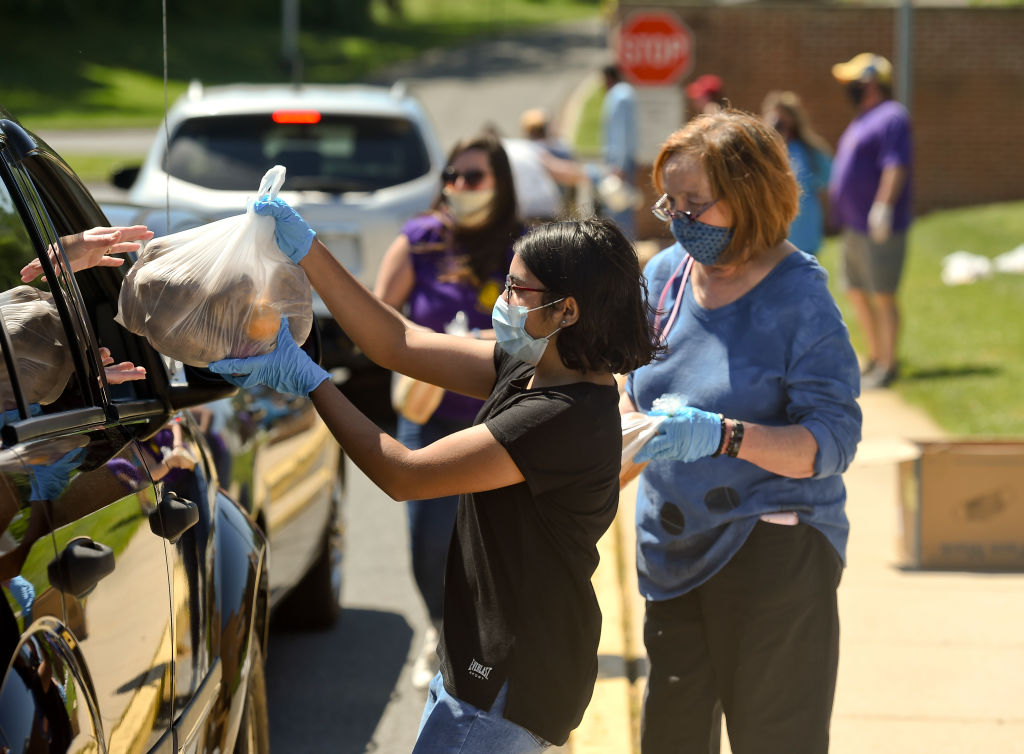
In recent weeks, the daily U.S. COVID-19 case and death counts have been hitting all-time highs, while fresh lockdowns and restrictions have been enacted across the country in an attempt to contain the spread of the virus. In response to the economic pain brought on by those measures, Congress is expected to pass a $900 billion economic relief package on Dec. 21.
The relief package is a slimmed down version of the CARES Act, passed in late March, which included enhanced unemployment benefits, direct stimulus checks, and funds for schools and health care facilities. The new package is expected to provide a $600 direct stimulus payment to qualifying Americans and a $300 weekly supplemental jobless benefit. It will also expand the Paycheck Protection Program (PPP) for small businesses and provide relief for renters facing eviction.
Before this most recent legislation, the government had authorized $2.3 trillion from the CARES Act and about $700 billion from various other economic aid packages for a total of just over $3 trillion dedicated to pandemic relief. Now, with the new measures, which arrived after months of congressional gridlock and last-minute negotiations, the government’s total fiscal response since the start of the pandemic stands at nearly $4 trillion.
That’s a hard number to contextualize, but for comparison, it’s roughly equal to the entire combined annual economic output of Brazil, Australia and Mexico. It’s also comparable to the 2009 Recovery Act, an economic rescue package passed in response to the Great Recession—if that bill had been passed four times and adjusted for inflation, that is.
But as a percent of GDP, the U.S. relief strategy still hasn’t been as aggressive as that of some other countries, according to a team of economists at universities in New York, South Korea and Turkey, who are following 168 nations’ fiscal and monetary responses to the pandemic. Their analysis shows that U.S. fiscal relief spending prior to the latest package was about 14% of GDP. The new package is likely to bump that ratio up, to roughly 18% of GDP. But that still puts the country behind other economically advanced economies like Japan (42% of GDP), Slovenia (25%) and Germany (20%).
While the above chart shows how much financial weight each country has thrown behind its relief measures, it can’t show how effective that relief has been in stabilizing each economy. In the U.S., for example, the national poverty rate has risen faster than ever, due in part to lapses in economic relief after certain CARES Act provisions expired. Many European countries, meanwhile, had existing safety nets set up well before the pandemic that helped to cushion the blow for many affected residents.
“Just the size of the package is never enough,” says Ceyhun Elgin, lecturer at Columbia University and professor of economics at Bogazici University in Turkey and one of the aforementioned researchers. “The content is what matters. There’s large variation in terms of how countries responded in the labor market. In some countries, there is support for parents whose kids are not in school. Others have direct food support, or compensation for sick workers.”
In crafting each country’s specific relief provisions, global policymakers had to respond to their nation’s unique economic vulnerabilities; existing income and health safety-net systems; and standing in the global credit markets, among other factors. In the U.S., which has a unique capability to carry large amounts of debt, many provisions of the relief funding came in the form of direct payments, which the public will not repay. PPP loans, for instance, do not need to be repaid if firms use the funds to cover employee wages. In Europe, relief measures focused more on expanding existing furlough systems and loans to businesses, which could avoid driving up those countries’ national debts, assuming the loans are repaid.
“Disposable incomes in the U.S. surged after direct checks were sent to households,” says Alejandra Grindal, a senior international economist at investment strategy firm Ned Davis Research, who has studied the global fiscal policy responses to the pandemic. “Europe didn’t see that kind of a jump.”
Despite the staggering size of COVID-19 relief in the U.S., millions of Americans continue to struggle to cover basic expenses. In part, that’s because those funds have been so widely distributed—many Americans who did not lose income received direct payments alongside those who did, and businesses that were unaffected by the pandemic could still get PPP loans.
While the U.S. relief efforts have been more like birdshot than a precision strike, funds have gotten some help to everyone relatively quickly and easily, political disputes notwithstanding. “Ideally we want to target those most impacted,” says Grindal. “But sometimes it’s easier to do blunt force.”
More Must-Reads from TIME
- Cybersecurity Experts Are Sounding the Alarm on DOGE
- Meet the 2025 Women of the Year
- The Harsh Truth About Disability Inclusion
- Why Do More Young Adults Have Cancer?
- Colman Domingo Leads With Radical Love
- How to Get Better at Doing Things Alone
- Michelle Zauner Stares Down the Darkness
Contact us at letters@time.com